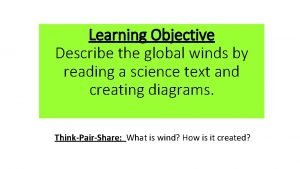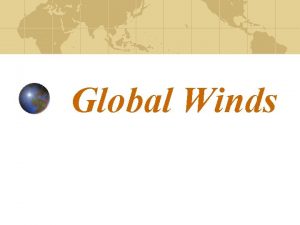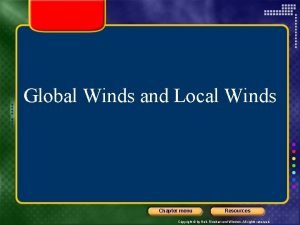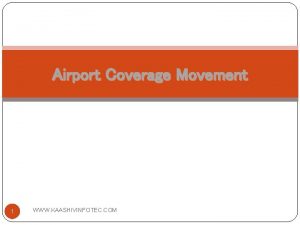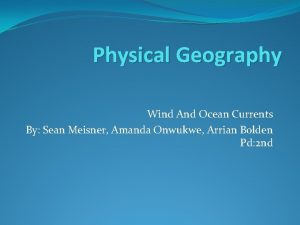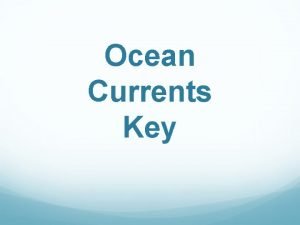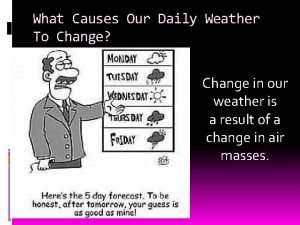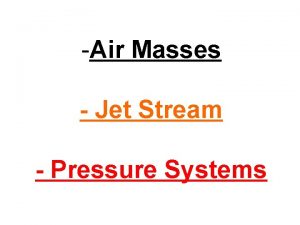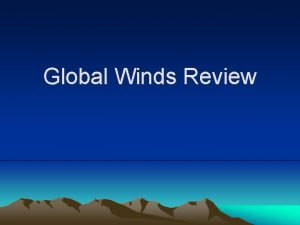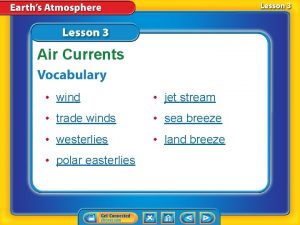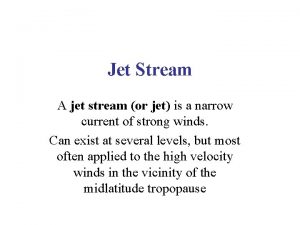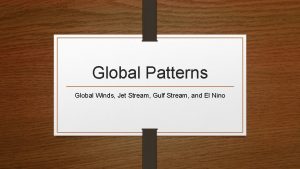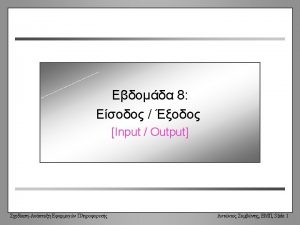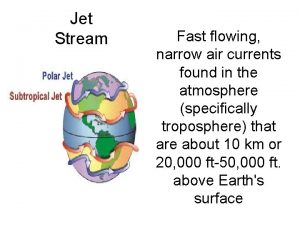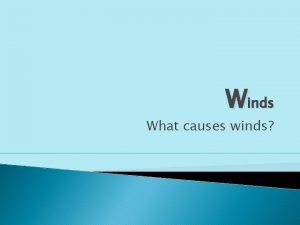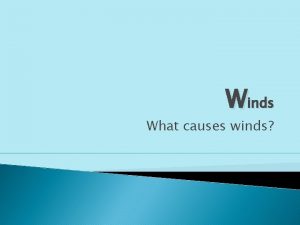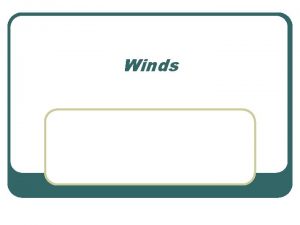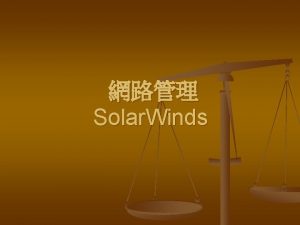Air Currents wind jet stream trade winds sea














- Slides: 14

Air Currents • wind • jet stream • trade winds • sea breeze • westerlies • land breeze • polar easterlies

Global Winds • Wind patterns can be global or local. • There are great wind belts that circle the globe, and the energy that causes this massive movement of air originates at the Sun. • Not all areas of Earth receive the same amount of energy from the Sun.

Global Winds (cont. ) • The differences in pressure between areas with low temperatures and high temperatures create wind. • Wind is the movement of air from areas of high pressure to areas of low pressure.

Global Wind Belts Three cells in each hemisphere move air through the atmosphere.

Global Wind Belts (cont. ) In the first cell, hot air at the equator moves to the top of the troposphere then moves toward the poles until it cools and moves back to Earth’s surface near the 30° latitude.

Global Wind Belts (cont. ) The second cell, between 30° and 60° latitude, is not a convection cell because its motion is driven by the other two cells.

Global Wind Belts (cont. ) The third cell, at the highest latitudes, is also a convection cell. Air from the poles moves toward the equator along Earth’s surface, and warmer air is pushed upward by the cooler air near the 60° latitude.

Global Wind Belts (cont. ) • The three cells exist in both the Northern and Southern Hemispheres. • Most of the air in this convection cell returns to the equator near Earth’s surface.

Global Wind Belts (cont. ) • The Coriolis effect occurs when the rotation of Earth causes moving air and water to move to the right in the Northern Hemisphere and to the left in the Southern Hemisphere. • The contrast between high and low pressure and the Coriolis effect creates distinct wind patterns, called prevailing winds.

Global Wind Belts (cont. ) • The trade winds are steady winds that flow from east to west between 30°N latitude and 30°S latitudes. • The prevailing westerlies are steady winds that flow from west to east between latitudes 30°N and 60°N, and 30°S and 60°S.

Global Wind Belts (cont. ) The polar easterlies are cold winds that blow from the east to the west near the North Pole and the South Pole. What are the main wind belts on Earth?

Global Wind Belts (cont. ) • Located near the top of the troposphere is a narrow band of high winds called the jet stream. • Jet streams influence weather as they move cold air from the poles toward the tropics and warm air from the tropics toward the poles.

Local Winds • Local winds occur whenever air pressure is different from one location to another. • A sea breeze is wind that blows from the sea to the land due to local temperature and pressure differences. • A land breeze is a wind that blows from the land to the sea due to local temperature and pressure differences.

Sea breezes and land breezes are created as part of a large reversible convection current.
 What is a deep current
What is a deep current Global winds and local winds worksheet answers
Global winds and local winds worksheet answers Easterlies
Easterlies Which blow over long distances?
Which blow over long distances? What is the difference between global and local winds?
What is the difference between global and local winds? Narrow belts of high speed winds
Narrow belts of high speed winds Yelvington jet aviation jet fuel
Yelvington jet aviation jet fuel Wind currents definition geography
Wind currents definition geography The thermohaline circulation belt _____.
The thermohaline circulation belt _____. Jet stream map
Jet stream map Jet stream
Jet stream Jet stream
Jet stream Jet stream
Jet stream The average winds aloft are strongest in
The average winds aloft are strongest in Differentiate byte stream and character stream
Differentiate byte stream and character stream


